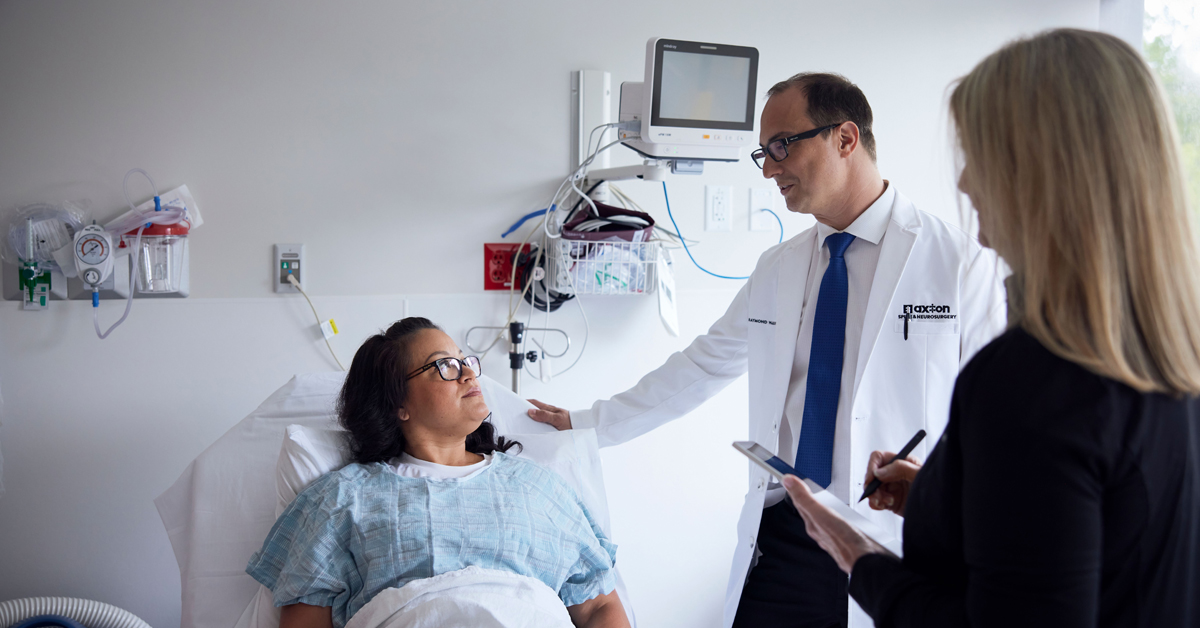Microdiscectomy: What is it?

Your spine is working hard all the time. In our everyday lives, we subject our spine to movements and strains without giving it much thought. Whether bending down, exercising, or simply sitting at a desk, our spine is constantly active.
Because of all the stresses our spines are subjected to, problems can arise that limit mobility and cause pain. One of the conditions people may experience is a herniated disc.
What is a Herniated Disc?
The spinal column consists of a series of bony segments known as vertebrae. Intervertebral discs lie between each vertebra, serving as cushions filled with gel. These discs function as shock absorbers that provide flexibility and enable movement while supporting the body’s weight.
A herniated or ruptured disc arises when the outer layer of the disc tears or weakens, causing the inner gel-like substance to protrude. This protrusion can exert pressure on nerves, resulting in pain, numbness, or weakness, often radiating down the arms or legs.
While many people heal without intervention by resting, more severe cases may require intervention. This can include physical therapy, medications, or injections. Surgery may be necessary, especially if there is significant nerve damage from the pressure of the disc material. The two most common surgeries are conventional disc surgery and a microdiscectomy.
Conventional Disc Surgery
Traditional spinal disc surgery often requires the surgeon to make a three to six-inch incision directly over the area being operated on. It is an extensive procedure, usually resulting in a prolonged recovery time. It may also necessitate a few days in the hospital.
Additionally, because of the bigger incision, there is a higher risk of muscle injury, infection, and scarring.
Microdiscectomy
Microdiscectomy is a minimally invasive surgical procedure used to treat herniated discs.
During microdiscectomy surgery, the surgeon relieves pain and other symptoms by removing disc, bone, and ligament fragments pressing on the nerve root.
Microdiscectomy is referred to as a minimally invasive spinal surgery because it involves making only a tiny incision. By using specialized equipment like microscopes, endoscopes, and small surgical instruments, the surgeon can work within the confined space of the spine with much less impact on the surrounding muscles and tissues.
How Does a Surgeon Perform Microdiscectomy?
In the past, a traditional discectomy involved removing the disc through a large incision. Nowadays, thanks to advanced techniques and equipment, skilled spine surgeons opt for microdiscectomies.
The surgeon uses small instruments like dilators and cameras to access the herniated disc and nerve area. Only a small incision is needed, which minimizes disruption to surrounding tissue.
Typically, it takes around 30 to 60 minutes to complete microdiscectomy surgery. However, the total procedure time is longer due to anesthesia and post-operative monitoring in the recovery room.
In most cases, people who undergo microdiscectomy surgery can return home on the same day.
What Is the Typical Recovery Time After Microdiscectomy?
Recovery typically involves a modified activity routine for several weeks. Initially, you will need time to allow for the soft tissues to heal and then begin physical therapy when cleared by your surgeon.
How Effective Is Microdiscectomy?
In general, it is successful, with many patients being quite happy with the results.
The procedure’s effectiveness, however, is ascribed to screening and evaluation for suitable candidates, as well as the patients’ dedication to maintaining good spine health following the procedure.
Will Microdiscectomy Help Me?
If you think you might be a candidate for microdiscectomy surgery or are interested in discovering more about this minimally invasive surgical procedure, we invite you to set up a consultation with our team of experts near Alpharetta and Atlanta. Your doctor will discuss your herniated disc symptoms, assess your condition, and explore treatment options tailored to your needs.
Don’t continue to live with back pain and radiating pain any longer – schedule an appointment today!
